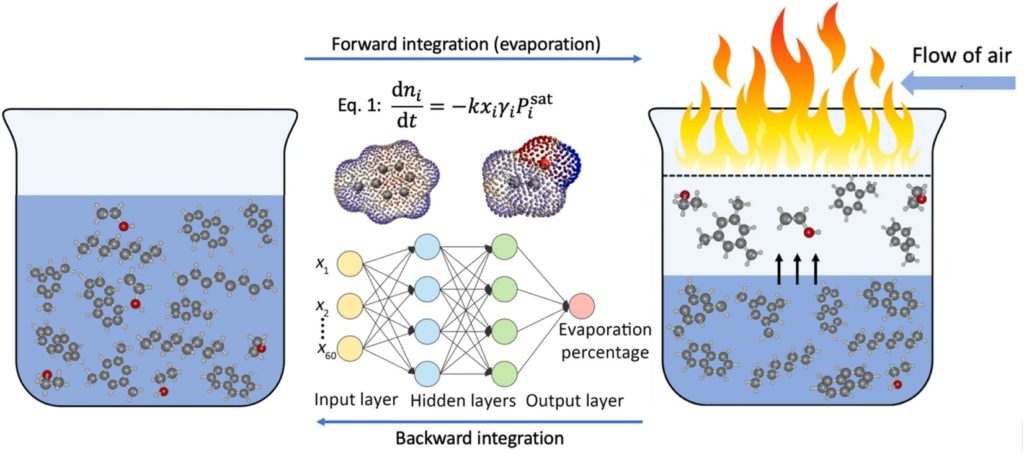Solving arson cases with AI and thermodynamics (COSMO-RS)
In arson cases, evidence such as DNA or fingerprints is often destroyed. One of the most important evidence modalities left is relating fire accelerants to a suspect. When gasoline is used as accelerant, the aim is to find a strong indication that a gasoline sample from a fire scene is related to a sample of a suspect. Gasoline samples from a fire scene are weathered (e.g., due to evaporation of gasoline components), which prohibits a comparison.
In a recent paper, a strategy was developed to successfully compare weathered and unweathered samples. Researchers from the TU Delft and the NFI (Netherlands Forensic Institute) combined machine learning, advanced thermodynamic modeling, and quantum chemical calculations to predict the initial composition of the gasoline used to start the fire. The figure below shows a brief outline of this approach.

The weathering process is described by Eq. 1, which is based on the gamma-phi approach of vapor-liquid equilibrium calculations. Forward integration of Eq. 1 is used to predict the composition of a weathered sample starting from the original sample. Backward integration is used to obtain the composition of the original gasoline starting from a weathered sample. Activity coefficients γ of the multicomponent mixture were obtained from COSMO-RS. Artificial neural networks (ANNs) were trained on field data and used to predict the evaporation percentage or the degree of weathering for a given composition. Our approach predicts the initial (unweathered) composition of the sixty main components in a weathered gasoline sample, with error bars of ca. 4% when weathered up to 80% w/w. This shows that machine learning is a valuable tool for predicting the initial composition of a weathered gasoline, and thereby relating samples to suspects.
Korver, E. Schouten, O.A. Moultos, P. Vergeer, M.M.P. Grutters, L.J.C. Peschier, T.J.H. Vlugt, M. Ramdin, Artificial intelligence and thermodynamics help solving arson cases, Nature Scientific Reports, 10, 20502 (2020).
Key conceptsCOSMO-RS machine learning